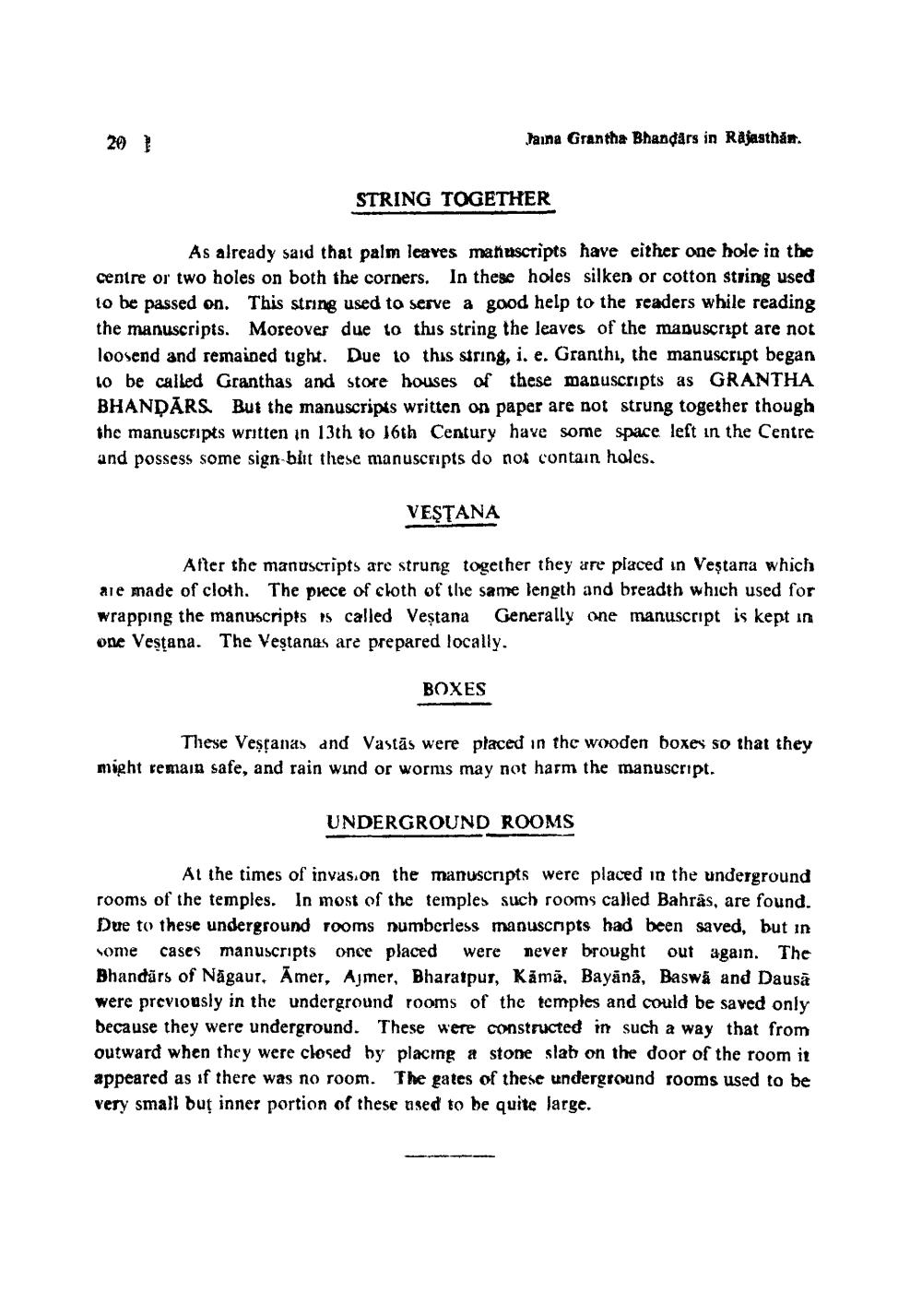________________
20
Jaina Grantha Bhandars in Rajasthår.
STRING TOGETHER
As already said that palm leaves manuscripts have either one hole in the centre or two holes on both the corners. In these holes silken or cotton string used to be passed on. This string used to serve a good help to the readers while reading the manuscripts. Moreover due to this string the leaves of the manuscript are not loosend and remained tight. Due to this string, i. e. Granth, the manuscript began to be called Granthas and store houses of these manuscripts as GRANTHA BHANDARS. But the manuscripts written on paper are not strung together though the manuscripts written in 13th to 16th Century have some space left in the Centre and possess some sign-blit these manuscripts do not contain holes.
VESTANA
After the manuscripts are strung together they are placed in Veştana which are made of cloth. The piece of cloth of the same length and breadth which used for wrapping the manuscripts is called Veștana Generally one manuscript is kept in one Vestana. The Vestanas are prepared locally.
BOXES
These Vessanas and Vastās were placed in the wooden boxes so that they might remain safe, and rain wind or worms may not harm the manuscript.
UNDERGROUND ROOMS
Al the times of invas.on the manuscripts were placed in the underground rooms of the temples. In most of the temples such rooms called Bahrás, are found. Due to these underground rooms numberless manuscripts had been saved, but in some cases manuscripts once placed were never brought out again. The Bhandars of Nāgaur. Āmer, Ajmer, Bharatpur, Kämä. Bayāna, Baswă and Dausā were previously in the underground rooms of the temples and could be saved only because they were underground. These were constructed in such a way that from outward when they were closed by placing a stone slab on the door of the room it appeared as if there was no room. The gates of these underground rooms used to be very small but inner portion of these used to be quite large.




